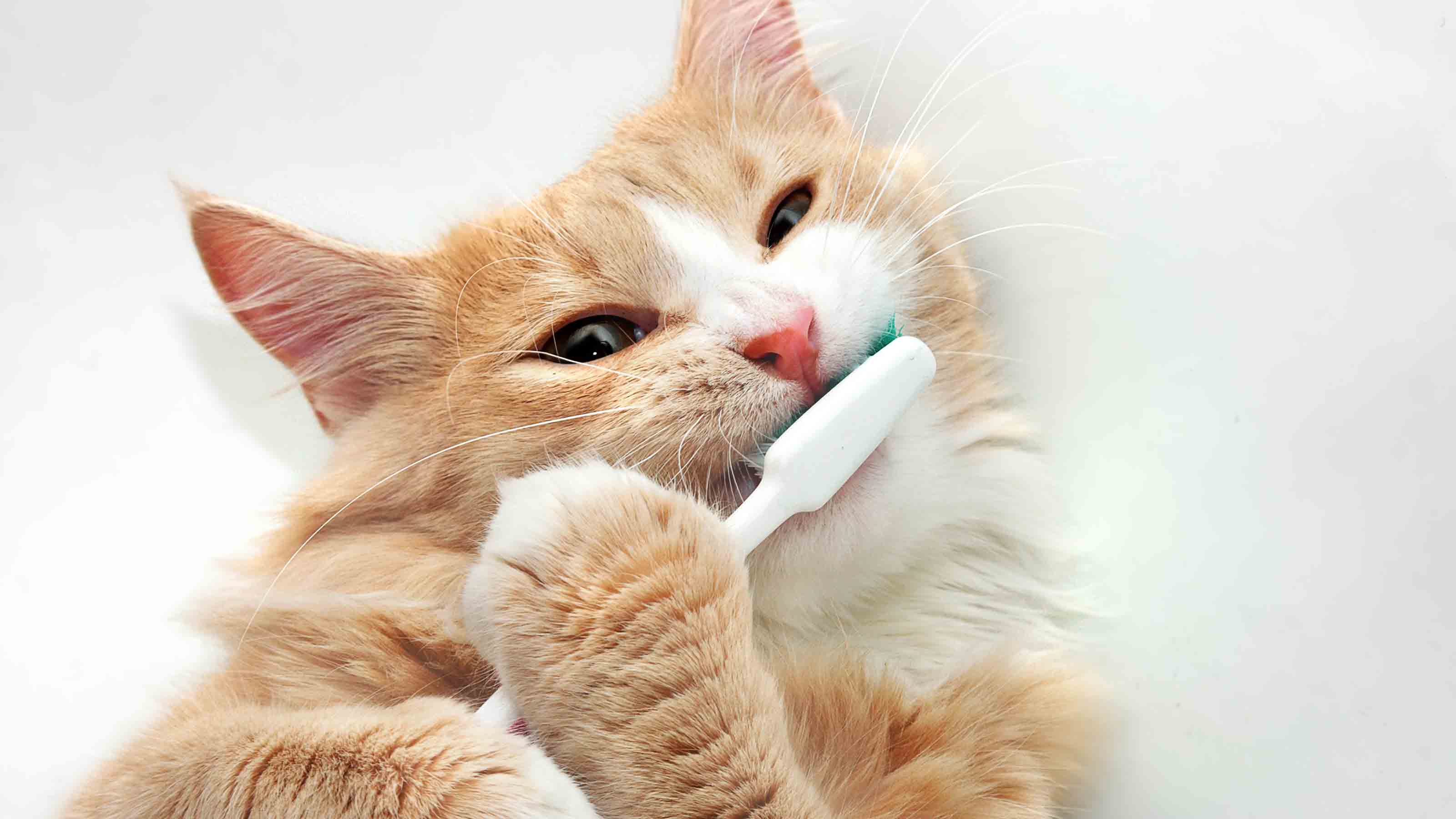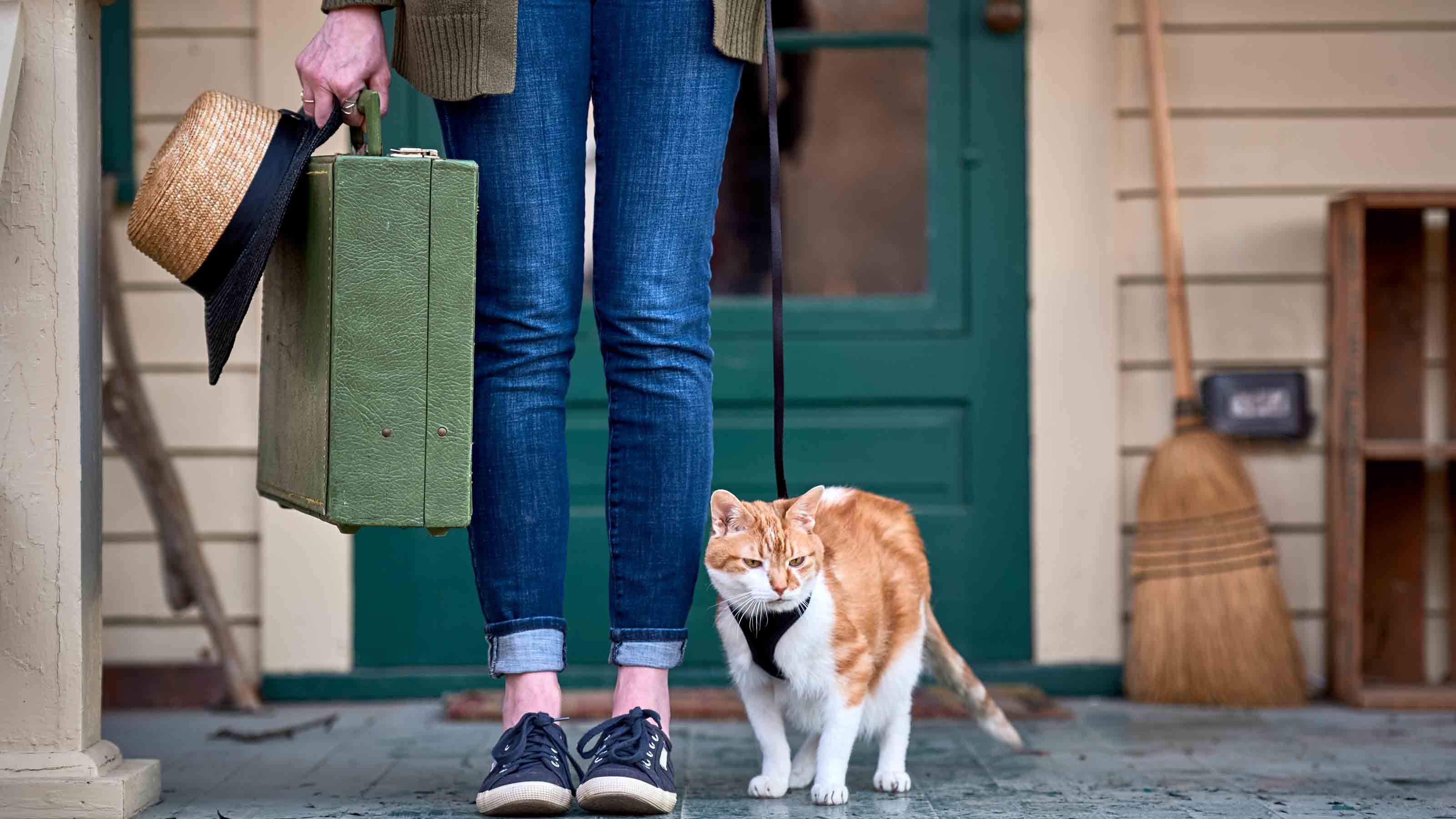13 Costs of Owning a Cat
Housecats may be known for their aloofness and low-maintenance attitude, but they're not cheap. Here's what you can expect to spend if you plan on adopting a new furry best friend.


They party all night and sleep all day. And no, this isn’t a generalization on college students, but the life of the housecat – or, well, at least mine.
According to the 2021-2022 National Pet Owners Survey conducted by the American Pet Products Association, 45.3 million American households own a cat. And due to COVID-19, adoptions have increased in some metro areas as folks look for companionship while staying mostly at home.
However, just as with human children, the costs to bring home and care for your fur baby can really add up. You need to consider vaccinations, food, litter and a host of other recurring and one-time expenses. For example, according to APPA, you can expect to spend $326 a year on food and treats alone. And that's assuming your cat isn't a picky eater or needs a special diet. To give you a realistic picture of how much owning a cat will cost you, we’ve interviewed veterinarians and pored over industry research – and sprinkled in insights gleaned from our own real-world experiences living with cats. Take a look.

Adoption Expenses
Unless you happen to stumble upon a box of kittens or notice a friendly stray in your neighborhood, your very first cost of owning a cat likely will be the adoption fee. How much depends on where you’re adopting it from. If you’re adopting from a local shelter, you should set aside as much as $200, according to Claudine Sievert, a doctor of veterinary medicine in Manhattan, Kansas, and a veterinary consultant at CatPet.club, a cat enthusiasts website. This price typically covers medical screenings, vaccines and spaying or neutering prior to adoption.
However, you can get around this cost. Adoption centers and shelters often waive adoption fees at certain times of the year. For example, The Animal Foundation in Las Vegas waived adoption fees for its “Clear the Shelters” event this past August. You may also be eligible for a discount on adoption fees if you’re a veteran, a senior or participate in a BOGO event where you can get two cats for the price of one adoption fee (often for bonded pairs).
If you decide to get your cat from a breeder, the price to adopt can run into the thousands of dollars for certain breeds, and this may not include vaccines or the cost to spay/neuter the animal.

Spay/Neuter Costs
For those who did stumble upon that box of kittens or let a stray cat into your home, you’re responsible for getting your animal spayed/neutered and vaccinated. Surgery can cost upwards to $300, according to Sievert.
According to Lindsay Hamrick, companion animals public policy director at the Humane Society of the United States, some cities offer surgery vouchers for low-income families to cover the entire cost of spay/neuter surgery, while other locales have low-cost spay/neuter clinics for its community members that bring costs down to $100 or less. For example, Emancipet a group of nonprofit pet clinics, based in Austin, Texas, offers spay/neuter surgeries for $69, and also has periodic free days in which members of the community are able to receive these services at no cost. The Human Rescue Alliance in Washington, D.C. offers spay/neuter services for $100 to spay a female cat and $65 for a male cat.
You can find low-cost clinics by asking your local veterinarian or animal shelter, or you can check out the PetSmart Charities database that lists PetSmart spay/neuter clinics across the country.

Vaccinations
You’ll want to keep your cat vaccinated against rabies, feline distemper and an upper respiratory disease known as feline viral rhinotracheitis. According to PetCareRx.com, you’ll spend as much as $80 on core vaccinations for kittens in their first year. After that, vaccination costs drop to roughly $50 a year for a healthy feline.
As with spay/neuter costs, you should do a quick internet search for low-cost animal health clinics that offer vaccinations. If you’re adopting, your adoption center may alert you to such clinics as mine did.

Routine Exams and Emergency Visits
Taking your cat to the vet for its annual checkup is relatively cheap. According to CareCredit.com, a routine vet exam costs $55, and you can keep this cost stable by making sure you’re not overfeeding your fluffy friend. Cats are susceptible to becoming obese, and while the Internet loves chubby cats, it’s bad for their health and your wallet.
If your cat needs emergency care, all bets are off when it comes to cost of care, especially if it swallows something it shouldn’t have, such as plastic or a ribbon that may require surgery.

Dental Costs
Just as you visit the dentist regularly for cleanings, you’re more than likely going to need your cat’s teeth cleaned at least once in its lifetime. Depending on where you live and on your cat’s age and the condition of its teeth and gums, you might spend $70-$400 for teeth cleaning, according to CareCredit.com . This price does not include other oral healthcare, such as tooth removal.

Food and Litter
Food and litter will be the bulk of your annual expenses for your cat. And how much you spend depends on the kind and brand of food you want to give your cat (wet, dry or a mix) and the type of litter you/they prefer. Typically, if you decide to feed your cat a mostly raw diet, it’s going to cost you.
My costs for food and litter are on average $60 a month, or $720 a year. Each month, I order one 8.5-pound jug of Tidy Cats Lightweight Glade Scented Clumping litter and three 24-can cases of 3-ounce cans of Fancy Feast from pet supplier Chewy.com. I save close to 5% by participating in the site’s autoship program, which ships my order at a predetermined time each month. I can edit my order to include extra toys or treats, or cancel a month if needed.

Toys
To help keep your furniture from being scratched up—and to keep your kitty engaged—you’ll want to play with them a lot. And that means buying toys, but don’t go overboard – cats have pretty cheap taste in toys. On average, I spend roughly $25 a year on cat toys, and that includes the trusted feather toy. If you want to spend $0 a year on cat toys, just wait until your next delivery of, well, anything. Your cat will have fun with an empty box, packing paper or an empty bag. For more free fun, you can also chase your cat around your residence.

Furniture Protection
To protect your furniture, you’ll want to invest in double-sided sticky tape known as “sticky paws.” Cats, in general, can’t stand for their paws to be stuck on surfaces, so sticky paws will eventually deter your cat from destroying your nice couch and chairs. You can purchase a 32.8-foot roll at pet supply website Chewy.com for as little as $9. In addition to the sticky paws, you’ll also want to invest in cardboard scratching posts. This will cost you about $120 a year (or $10 a board) as they need to be replaced often.

Pet Insurance
Just like humans have health issues, so does Garfield. And if you're worried about an accident draining your pockets, you may want to consider pet insurance while your cat is still relatively young and healthy.
According to new findings from AdvisorSmith, business research firm, the average cost of pet insurance for a cat is just over $28 per month. However, the cost varies depending on the insurer, the breed of your cat and where you live. For example, a Russian Blue cat costs roughly $34 per month to insure, whereas a Domestic Shorthair costs about $26 per month. If you're going based on location, insurance costs around $46 a month New York, New York vs. just over $24 in Oklahoma City, Oklahoma. Before selecting a policy, consider its deductible, the annual maximum payout, and the reimbursement rate for covered services. The policy typically covers preventative services such as routine vet exhibits.

Grooming
Unlike their canine counterparts who need a physical bath often, the average indoor housecat is a pretty clean animal. They are pristine self-groomers who spend a lot of the day bathing and sleeping. But if you do need to help kitty out, you can expect to spend, on average, $50 per visit to the groomer. This could include a bath, nail trim, and a haircut. (Some groomers may refuse to bathe a cat that has never had an in-home bath before. But they will give your cat a haircut.)

Travel Accessories
If you want to travel with your cat, you need to prepare, especially during the pandemic. For those traveling by car, you need to invest in a good travel carrier that includes a litter box, food and water bowls, and a harness if you plan to help let your cat stretch its legs. You can buy an extra-large, portable cat cage that includes a litter box on Amazon.com for roughly $50 and a cat harness for about $20.
Or you and your cat can travel by plane. Delta and United allow you to carry on small dogs and cats for $125 each way on domestic flights. (Due to COVID-19, American Airlines is no longer allowing checked pets.) So let’s say, for example, I planned to bring my cat, Nikon, home to my parents for the winter holidays. I’d spend $250 on Nikon’s very own roundtrip airfare from Washington, D.C. to Michigan and back.

Apartment Fees
Renters have another fee to look out for if they decide to adopt a cat: apartment fees. You may be responsible for a pet deposit fee and or a monthly pet surcharge added to your rent. Similar to putting down a deposit when you first move into a new complex, the pet deposit covers any damages that your beloved kitty may cause. (It may be refundable.) According to a PetFinder survey, pet deposits can range from 40% to 85% of the cost of one month's rent. You may also pay what's known as pet rent, generally about $50 a month.
Be sure to know your apartment's policy before bringing home a new pet. Some landlords may not have a fee at all. For example, I've lived in a complex that had pet deposits and pet rent, while my current place of residence has neither.

Companionship: Priceless
If these initial numbers have you thinking cat adoption is out of your reach, it’s not. Remember, you can save on many of these costs by simply adopting from a shelter that includes a lot of the aforementioned start-up costs. Use your local animal shelter and the internet to point you in the right direction for low-cost care, and keep your cat as healthy as possible with food, water and exercise. You’ll also want to squirrel away extra money when available to help cover any unexpected emergency visits.
As for me, I budget roughly $800 to $1,000 a year on my Nikon, as I sometimes get him extra toys and treats. And remember, your rewards -- cat kisses and cuddles -- are priceless.
Profit and prosper with the best of Kiplinger's advice on investing, taxes, retirement, personal finance and much more. Delivered daily. Enter your email in the box and click Sign Me Up.

Rivan joined Kiplinger on Leap Day 2016 as a reporter for Kiplinger's Personal Finance magazine. A Michigan native, she graduated from the University of Michigan in 2014 and from there freelanced as a local copy editor and proofreader, and served as a research assistant to a local Detroit journalist. Her work has been featured in the Ann Arbor Observer and Sage Business Researcher. She is currently assistant editor, personal finance at The Washington Post.
-
 I'm want to give my 3 grandkids $5K each for Christmas.
I'm want to give my 3 grandkids $5K each for Christmas.You're comfortably retired and want to give your grandkids a big Christmas check, but their parents are worried they might spend it all. We ask the pros for help.
-
 If You're Not Doing Roth Conversions, You Need to Read This
If You're Not Doing Roth Conversions, You Need to Read ThisRoth conversions and other Roth strategies can be complex, but don't dismiss these tax planning tools outright. They could really work for you and your heirs.
-
 Could Traditional Retirement Expectations Be Killing Us?
Could Traditional Retirement Expectations Be Killing Us?A retirement psychologist makes the case: A fulfilling retirement begins with a blueprint for living, rather than simply the accumulation of a large nest egg.
-
 Amazon Resale: Where Amazon Prime Returns Become Your Online Bargains
Amazon Resale: Where Amazon Prime Returns Become Your Online BargainsFeature Amazon Resale products may have some imperfections, but that often leads to wildly discounted prices.
-
 Roth IRA Contribution Limits for 2026
Roth IRA Contribution Limits for 2026Roth IRAs Roth IRAs allow you to save for retirement with after-tax dollars while you're working, and then withdraw those contributions and earnings tax-free when you retire. Here's a look at 2026 limits and income-based phaseouts.
-
 Four Tips for Renting Out Your Home on Airbnb
Four Tips for Renting Out Your Home on Airbnbreal estate Here's what you should know before listing your home on Airbnb.
-
 Five Ways to a Cheap Last-Minute Vacation
Five Ways to a Cheap Last-Minute VacationTravel It is possible to pull off a cheap last-minute vacation. Here are some tips to make it happen.
-
 How Much Life Insurance Do You Need?
How Much Life Insurance Do You Need?insurance When assessing how much life insurance you need, take a systematic approach instead of relying on rules of thumb.
-
 When Does Amazon Prime Day End in October? Everything We Know, Plus the Best Deals on Samsonite, Samsung and More
When Does Amazon Prime Day End in October? Everything We Know, Plus the Best Deals on Samsonite, Samsung and MoreAmazon Prime The Amazon Prime Big Deal Days sale ends soon. Here are the key details you need to know, plus some of our favorite deals members can shop before it's over.
-
 How to Shop for Life Insurance in 3 Easy Steps
How to Shop for Life Insurance in 3 Easy Stepsinsurance Shopping for life insurance? You may be able to estimate how much you need online, but that's just the start of your search.
-
 Five Ways to Shop for a Low Mortgage Rate
Five Ways to Shop for a Low Mortgage RateBecoming a Homeowner Mortgage rates are high this year, but you can still find an affordable loan with these tips.
